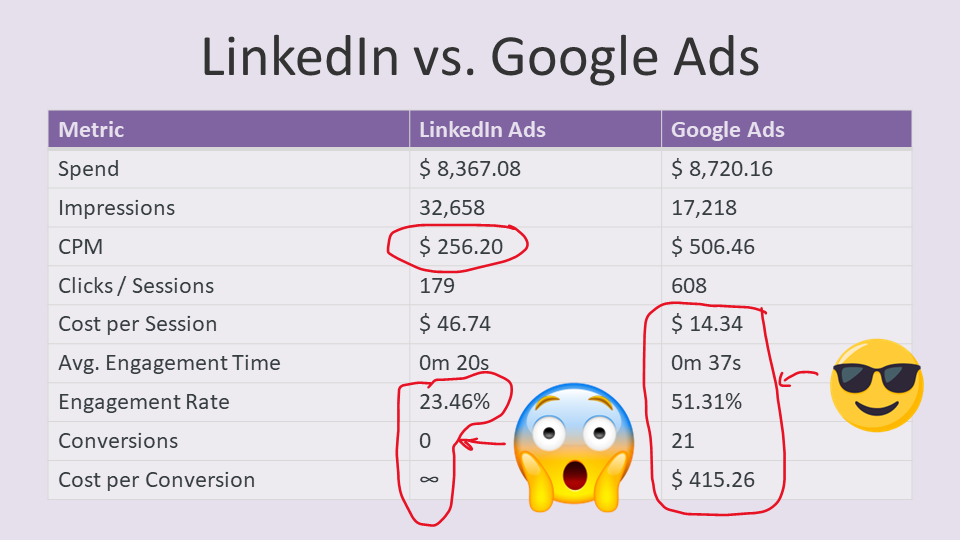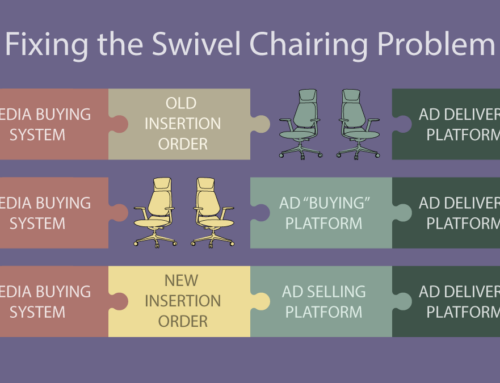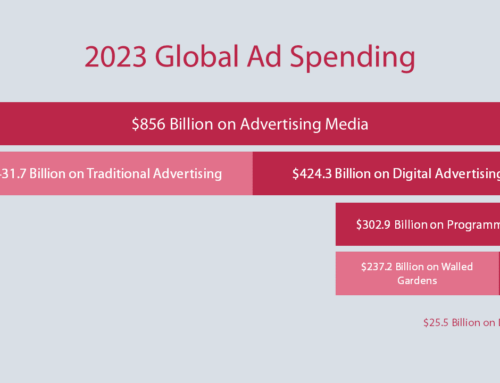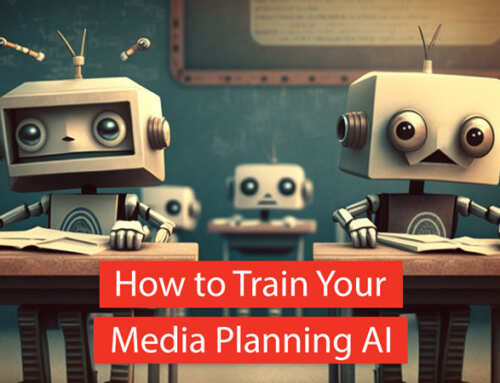In a 30-day experiment, we pitted LinkedIn Ads against Google Ads to see which platform offers the best value for our advertising spend. Here are the results.
Advertising Context
The goal of this advertising initiative is to drive website engagement for our software product, Bionic for Agencies, which is SaaS software used by advertising agencies for media planning and media buying.
Given the B2B nature of this campaign, it seems LinkedIn would be a good platform for advertising. I was curious to know how LinkedIn Advertising performs against Google Ads.
Although we’ve run ads on LinkedIn many times over the years, this is the first time we’ve done a rigorous side-by-side comparison. Because of the big differences between the platforms in ad formats, audience targeting, and other factors, it can never be a truly apples-to-apples comparison. However, we did our best to create an even playing field.
Here’s a deep dive into our findings from our ads that ran for 30 days from September 21, 2023 to October 20, 2023.
Spend Overview
For this experiment, we created two campaigns each with a $10,000 budget. Here is how much we actually spent during the evaluation period:
LinkedIn Ads: $8,367.08
Google Ads: $8,720.16
While the investment was nearly similar for both platforms (with Google Ads being slightly higher by about $353.08), the outcomes were quite distinct.
Impressions: Quantity vs. Cost
LinkedIn took the lead with almost double the impressions (32,658) compared to Google Ads (17,218). However, it’s not just about quantity. The Cost per 1000 Impressions (CPM) on LinkedIn was $256.20, significantly lower than Google Ads’ CPM of $506.46. (Side note: Google’s astronomical CPM is probably why it’s impossible to report on CPM in their ad buying platform.)
This indicates that LinkedIn was more cost-effective in terms of audience reach. However, it’s important to note that both of these platforms are a lot more expensive than other platforms on a CPM basis.
Engagement: Clicks and Quality
Google Ads stole the show when it came to engagement.
Google generated 608 clicks which led to website sessions, which is more than three times the 179 sessions from LinkedIn. Moreover, the difference in cost-effectiveness of these engagements was stark. The cost per session on Google Ads ($14.34) was a fraction compared to LinkedIn’s ($46.74).
Furthermore, the quality of engagement was higher on Google Ads, with users spending an average of 37 seconds, almost double LinkedIn’s 20 seconds.
The engagement rate further illustrated this difference. Google sessions achieved a 51.31% engagement rate while LinkedIn came in at 23.46%. In our case, engagement rate is defined as the share of sessions that lasted longer than 10 seconds, had a conversion event, or had 2 or more screen or page views. In other words, sessions where they did not immediately bounce.
Conversions: The Ultimate ROI Metric
The conversion metric was perhaps the most telling.
LinkedIn Ads, unfortunately, didn’t drive any conversions. Although we’ve never been “crushing it” with our advertising, it’s extremely rare to get shut out on conversions. In fact, I can’t think of another case where we came up dry. It makes me wonder what kind of traffic is coming from LinkedIn.
In contrast, Google Ads produced 21 conversions, costing an average of $415.26 per conversion. Although this cost per conversion may seem high, we love this result. It’s significantly better than the goal we have set based on our economics. Bottom line, we’ll do this all day long.
Our Key Takeaways
Here is what we learned from our experiment:
- Efficiency in Spend: Google Ads provided more bang for the buck in terms of clicks, engagement, and conversions.
- Engagement Quality: Google Ads’ traffic was not only higher in volume but also superior in quality, evident from the engagement time and rate.
- Conversions: Google Ads was the clear winner, making it a better choice for those focusing on ROI.
- Visibility and Reach: If the goal is brand visibility and maximizing reach, LinkedIn’s higher impressions at a lower CPM make it a contender.
If conversions and engagement are the primary goals of your media plan, Google Ads appears to be the better choice. However, for campaigns focusing on brand visibility among professionals, LinkedIn still has its merits.
As a result of this test, we shifted our ad spending from LinkedIn Advertising to Google Advertising. However, we’ll keep testing LinkedIn to see if we can get it to work.





